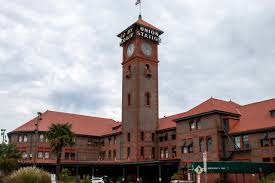PORTLAND, Ore. — A renewed push to restore passenger rail service between Portland and Salt Lake City is gaining traction among transportation advocates who say the line could bring economic opportunity and improve connectivity for rural communities.
In November 2023, Baker City resident Matt Krabacher helped organize a petition advocating for the return of the route. By January 2024, he had gathered 1,500 signatures and presented the petition to the Oregon Legislature. Since then, Krabacher, Eastern Oregon vice president for the Association of Oregon Rail and Transit Advocates, has made restoring the line a top priority.
The service, known as the Pioneer, operated from 1977 until 1997, connecting Seattle to Denver while passing through Oregon towns including Portland, The Dalles, Pendleton, Baker City, and Ontario, as well as Boise and Salt Lake City. Its discontinuation was attributed to budget shortfalls. Nearly three decades later, the Federal Railroad Administration recommended its revival in a January report to Congress.
Also Read
At the Pacific Northwest Rail Summit in Portland on Thursday, Krabacher emphasized that restoring the Pioneer would bridge rural and urban areas across Oregon, Idaho, and Utah. He argued that the route would create jobs, improve transit access, and stimulate economic development in smaller communities.
Funding remains the key obstacle. Most state transportation budgets prioritize highways, leaving few dedicated resources for passenger rail. Krabacher noted that Amtrak might not need to operate the line directly; states could establish their own rail authorities or form an interstate rail compact to oversee operations.
Elaine Clegg, an Amtrak board member and CEO of Boise-based Valley Regional Transit, highlighted the need for better service to fast-growing regions. According to the U.S. Census Bureau, Idaho saw a 2.2% increase in housing units between 2023 and 2024, Utah grew by 2%, while Oregon’s 0.9% growth lagged behind the national average of 1%. “Amtrak is very focused on the Northeast corridor, as it should be,” Clegg said. “But it should also build a national network that truly connects the United States.”
Currently, Oregonians seeking eastbound train service have limited options. The Amtrak Empire Builder runs near the U.S.-Canada border from Seattle or Portland to Chicago, while access to the California Zephyr, which connects Salt Lake City and Denver, requires traveling south to California first.
Krabacher also cited environmental benefits, noting that passenger rail is one of the most sustainable forms of transportation, second only to waterways in low carbon emissions. “Rail provides resiliency and sustainable transit that helps ensure future generations have access to stable transportation and economic opportunity,” he said.
The project could also reduce congestion along Interstate 84 and serve vulnerable populations, including seniors, students, and veterans. Craig Raborn, executive director of the Community Planning Association of Southwest Idaho, emphasized the potential for construction and manufacturing jobs associated with restoring the line.
Rural Oregon faces particular challenges. Communities like Baker City contend with aging infrastructure, limited healthcare access, and declining populations. Krabacher noted that the nearest airport options are small regional facilities in Pendleton or Boise, which is about two hours away.
“People in my town are often forced to drive long distances for specialty care, which isn’t feasible for those with health concerns,” he said. “A train or bus service would provide an affordable, accessible option that keeps residents connected to essential services without having to relocate.”
Advocates hope that growing interest in sustainable transportation, coupled with the region’s population and economic trends, will prompt state and federal leaders to prioritize the revival of the Pioneer, linking rural towns to urban centers and creating a more connected Pacific Northwest.












